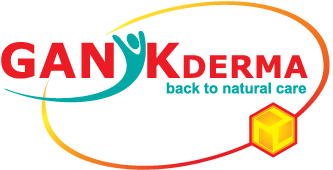A skin graft is a section of epidermis and dermis which has been completely separated from its blood supply in one part of the body, the donor site, before being transplanted to another area of the body, its recipient site (Grabb and Smith, 1991).
Skin grafts may be classified as partial or full-thickness grafts, depending on how much of the dermis is harvested by the surgeon.
A split-skin or partial-dermal skin graft involves excision of the epidermis and part of the dermis, but leaves behind sufficient reticular (deep) dermis in the wound bed to enable the skin to regenerate itself. The most common donor site areas for split-skin grafts include the thigh, buttock, back, upper arm, forearm and abdominal wall (Coull, 1991).
A full-thickness graft consists of the epidermis and the fullthickness of the dermis. Since none of the reticular dermis remains to allow spontaneous regeneration of skin, the wound must be directly closed.
In the first 3 – 4 days post-surgery, the donor site wound produces moderate to heavy amounts of exudate, depending on the size of the wound area. After this, exudate levels diminish as re-epithelialisation progresses.
Treatment of skin graft donor site
To minimise discomfort for the patient it is vital to use an appropriate dressing. Removal of an inappropriate dressing can cause a great deal of pain and may even delay wound healing (European Wound Management Association [EWMA], 2002).
GANIKDERMA® products in treatment of dermabrasions
The healing of donor site wounds can be divided into two phases:
- The wet phase is when copious amounts of exudate are produced. Dressing must be absorbent to absorb the excess of exudate. In this phase, support of GANIKDERMA® Impregnated Dressings absorbs excess of exudate, some of it going into secondary dressing [gauze, nonwoven]
- The dry phase is when the exudate levels fall dramatically and the wound bed becomes dry. Dressing must be non-adherent, which can remain undisturbed without adhering to the wound bed. In this phase, GANIKDERMA® products [Impregnated Dressing and Ointment] don’t adhere to the wound and can be removed without pain and trauma.
Clearly, dressings which ensure a moist environment shows obvious clinical advantages compared to the “dry” dressings, in terms of comfort, pain and rate of infection. Also, the dressing should protect the wound and prevent infection.
GANIKDERMA® products offer the following solutions:
- Anti-inflammatory properties of GANIKDERMA® Ointment are given according to the table below:
| GANIKDERMA® ointment compound | Constituent | Effect |
|---|---|---|
| Olive oil | Phenols | Anti-inflammatory action |
| Oleocanthal | Anti-inflammatory action | |
| Sunflower oil | Fatty acids | Anti-inflammatory action |
| Camphor | Anti-inflammatory action |
- Prevent and control infection, due the following properties of GANIKDERMA® Ointment constituents:
| GANIKDERMA® ointment compound | Constituent | Effect |
|---|---|---|
| Olive oil | Phenolics acid | Antibacterial action |
| Tannins | Antibacterial action | |
| Beeswax | Flavonic derivates (flavonide) | Antibacterial action |
| Ferulic acid | Antibacterial and bacteriostatic action | |
| Colophonium | Antiseptic | |
| Camphor | Antiseptic | |
| Castor oil | Ricinoleic acid | Antibacterial action |
- Ensures a moist environment characterized by constant wound hydration, temperature and pH
- Provides natural micronutrients required for protein synthesis: fatty acids, sterols, esters, glycerides, provitamin A, vitamin C, vitamin E. They are necessary for the proper function of producing collagen, the primary constituent of the granulation tissue that heals a wound and the key component in blood vessel walls.
- Provides the early development of granulation tissue by stimulating epithelial cells, keratocytes and endothelial cells by restoring the skin’s lipid barrier and the production of collagen and elastin.
- Increases epithelization even in the case of deep wounds by stimulating the reserves of residual epithelial cells.
- Assures a good quality of the new epithelium and help regenerates the skin with good tenderness and appearances
- Promote the formation of the tissues due to the Vitamin E, Oleic acid, and Phenolic compounds (antocian, flavonoid, tannins, phenolic acids)
